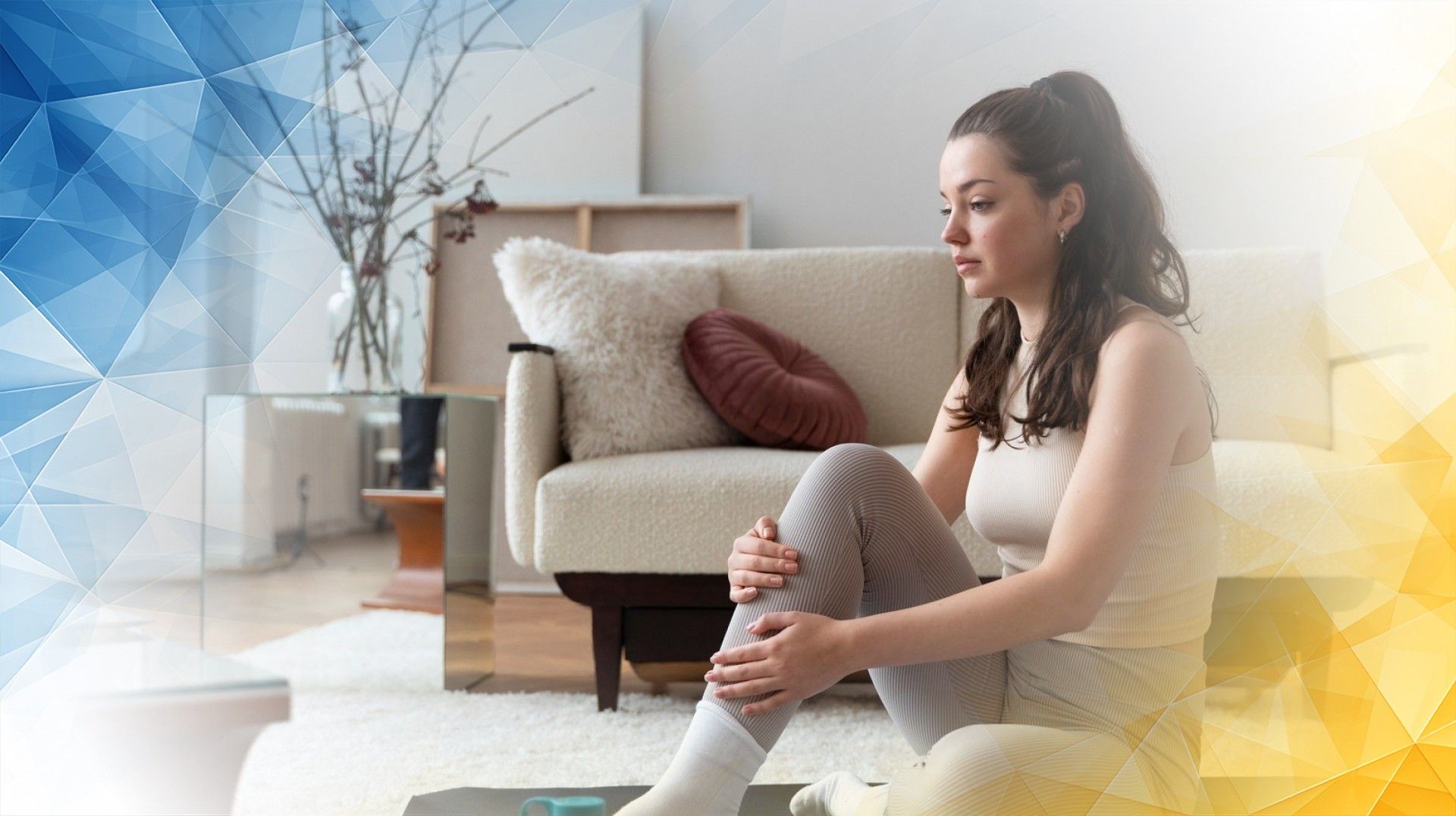



Knee pain is a common issue for many women as they approach middle age, often making daily activities difficult and affecting overall quality of life. Recent research highlights that hormonal changes during this stage—especially those related to menopause—can significantly influence knee joint health and biomechanics. In this article, we’ll explore how shifting hormone levels impact the knee, explain why pain often develops during middle age, and discuss the latest rehabilitation approaches that can help. By blending science and practical advice, we aim to give you a clearer understanding of what’s happening inside your knees and what you can do to feel better.
Hormones do much more than regulate mood and energy—they also play a crucial role in the health of the tissues supporting our joints . For women, oestrogen is especially important for keeping ligaments and cartilage strong and flexible. Ligaments provide stability by connecting bones, while cartilage acts as a shock absorber within the joint.
During middle age, oestrogen levels naturally decline. This reduction can weaken ligaments and cartilage, making them less able to support the knee. As a result, the joint becomes more vulnerable to instability, discomfort, and even injury . These changes may subtly alter walking patterns or posture, increasing stress on certain parts of the knee . Over time, these biomechanical shifts can set the stage for chronic pain. Understanding the hormonal influence on joint mechanics is key to recognizing why knee pain often emerges at this point in life.
Menopause marks the transition when a woman’s menstrual cycles end, typically between ages 45 and 55, and is accompanied by a significant drop in oestrogen. This hormonal shift accelerates changes in the connective tissues of the knee , particularly in collagen, the protein that gives cartilage and ligaments their strength and elasticity.
Lower oestrogen levels also mean less natural lubrication within the knee, leading to increased friction and faster wear and tear. This makes the joint more susceptible to conditions such as osteoarthritis —a leading cause of persistent knee pain among middle-aged women. For many, the onset of menopause signals the beginning of more frequent or severe knee discomfort . Recognizing the link between menopause and joint health is crucial for finding the most effective ways to prevent and manage symptoms as they arise.
Successfully managing knee pain in middle-aged women involves addressing both the symptoms and the underlying causes. Physiotherapy is a cornerstone of care, with personalized exercise programs that target the muscles supporting the knee , particularly the quadriceps and hamstrings. Building muscle strength eases strain on the joint and can help restore more natural movement patterns.
Beyond traditional exercises, new techniques like neuromuscular training are gaining traction. These exercises improve balance and coordination, reducing the risk of movements that can aggravate the knee. Manual therapies and the use of custom orthotics can also provide relief by improving joint alignment and reducing pressure on sensitive areas. Often, a combination of these approaches is needed to best support joint strength , mobility, and comfort. By focusing on both the hormonal changes and the resulting biomechanical shifts, these strategies offer a comprehensive path to recovery.
The connections between hormones, menopause, knee biomechanics , and rehabilitation underscore the need for a holistic approach to knee pain in women. Healthcare providers increasingly recognize the importance of considering hormonal status when diagnosing and treating joint issues. While current treatments provide relief for many, ongoing research is aimed at better tailoring care to each woman’s unique hormonal and physical profile.
For women experiencing knee pain, learning about the hormonal influences can encourage more proactive discussions with healthcare providers and help guide treatment choices. The most effective care plans will be those that integrate hormonal insights with personalized physical therapies.
Hormonal changes during middle age—particularly those tied to menopause —play a major role in the biomechanics of the knee, contributing to the pain that many women experience. By understanding these biological changes and embracing innovative rehabilitation strategies, women can take meaningful steps to reduce pain and protect their joint health. A comprehensive approach that considers both hormones and physical therapy is essential for maintaining mobility and enjoying a higher quality of life during this important stage.
Reddy, K. J., Shah, J. D., Kale, R. V., & Reddy, T. J. (2013). Fungal prosthetic joint infection after total knee arthroplasty. Indian Journal of Orthopaedics, 47(5), 526-529. https://doi.org/10.4103/0019-5413.118213
All our treatments are selected to help patients achieve the best possible outcomes and return to the quality of life they deserve. Get in touch if you have any questions.
At London Cartilage Clinic, we are constantly staying up-to-date on the latest treatment options for knee injuries and ongoing knee health issues. As a result, our patients have access to the best equipment, techniques, and expertise in the field, whether it’s for cartilage repair, regeneration, or replacement.
For the best in patient care and cartilage knowledge, contact London Cartilage Clinic today.
At London Cartilage Clinic, our team has spent years gaining an in-depth understanding of human biology and the skills necessary to provide a wide range of cartilage treatments. It’s our mission to administer comprehensive care through innovative solutions targeted at key areas, including cartilage injuries. During an initial consultation, one of our medical professionals will establish which path forward is best for you.
Contact us if you have any questions about the various treatment methods on offer.
Legal & Medical Disclaimer
This article is written by an independent contributor and reflects their own views and experience, not necessarily those of londoncartilage.com. It is provided for general information and education only and does not constitute medical advice, diagnosis, or treatment.
Always seek personalised advice from a qualified healthcare professional before making decisions about your health. londoncartilage.com accepts no responsibility for errors, omissions, third-party content, or any loss, damage, or injury arising from reliance on this material. If you believe this article contains inaccurate or infringing content, please contact us at [email protected].